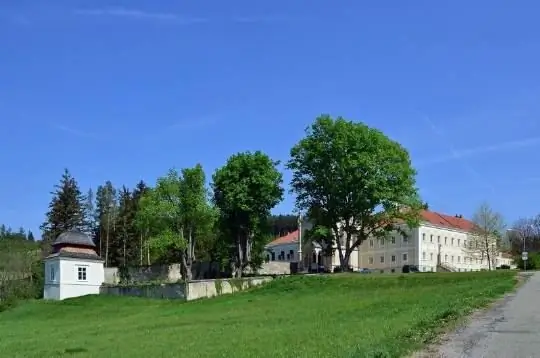
Description of the attraction
The small Austrian village of Mayerling, located in the Vienna Woods, in which less than one and a half hundred people live, would probably not have been so popular if it had not been the arena for tragic events in the history of Austria. In the local castle, now turned into a monastery, in 1889, the Crown Prince of Austria, the only son of Emperor Franz Joseph and his wife Elizabeth, Rudolph, shot and killed his mistress Maria von Vechera and committed suicide.
Mayerling is first mentioned in a historical document of 1136. In those days, Mayerling was a small manor house with a simple church, which was ruled by the Abbey of Heiligenkreuz. In the 19th century, this estate was acquired by Crown Prince Rudolph, who ordered the rebuilding of three detached buildings into one hunting castle.
After the death of Rudolph and his beloved, the inconsolable Emperor Franz Joseph turned Mayerling Castle into a real memorial. A church was built on the site of the bedroom where the tragedy took place. Where the altar now stands was the bed of the crown prince. Mayerling Castle was rebuilt into a monastery and handed over to the Carmelites, who now take care of it.
In addition to the church, you can see a museum, a hospital and ancillary monastery premises. The exposition of the museum is dedicated to unhappy lovers. The guides will show you the sarcophagus of the prince's mistress. What happened on that fateful winter day at the castle is still unknown. One thing is clear, the imperial house tried to hide all the details from the general public. The body of Baroness von Evenings was secretly buried in the Heiligenkreuz cemetery. The sarcophagus was moved to the museum after the tomb of the beloved Austrian prince was destroyed during the hostilities in 1945.






